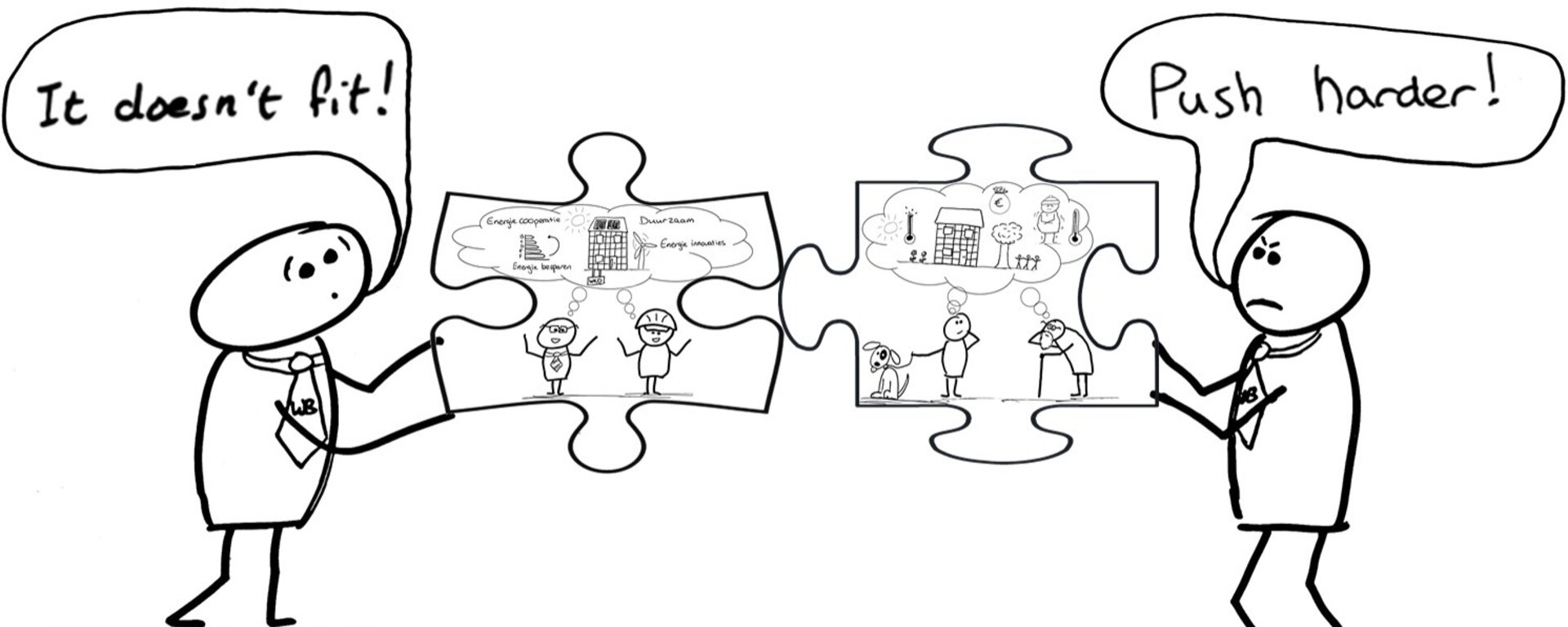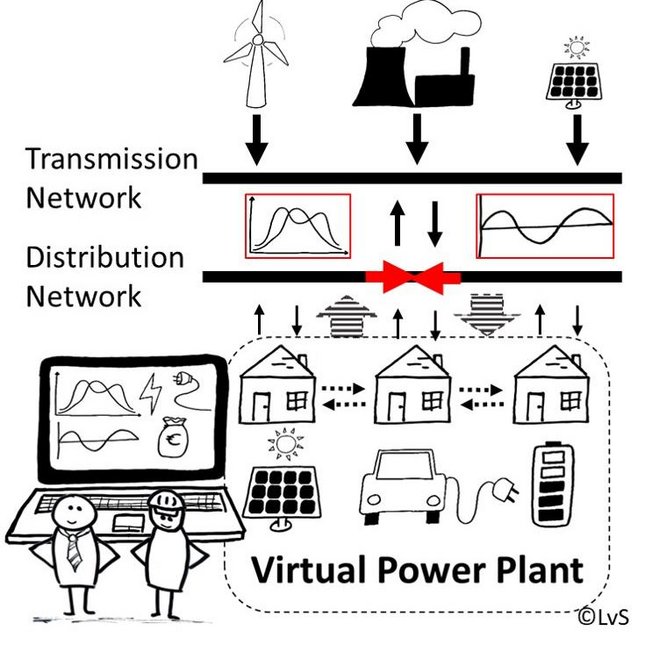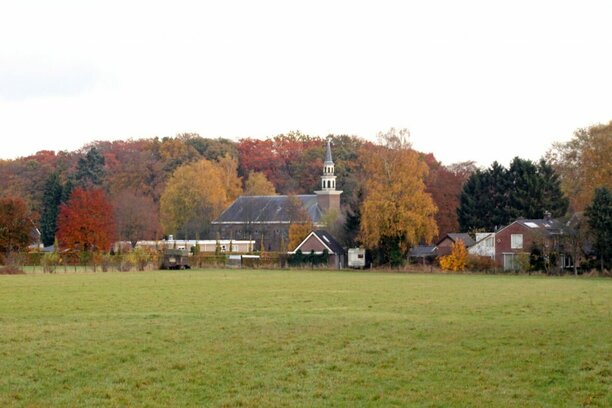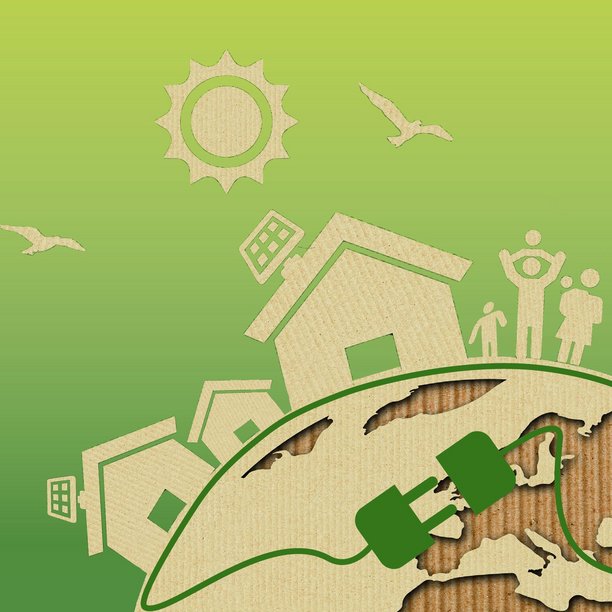Empowering citizens and communities to drive a fair energy transition
World energy consumption is still heavily dependent on fossil fuels. Although a shift towards renewable energy is taking place, the pace is not fast enough to offset the impacts of worldwide economic expansion and a growing population, as the International Energy Agency (IEA) warned at the end of 2019. However, the need to speed up the energy transition also creates new opportunities. In an international research project led by Eindhoven University of Technology, scientists have developed a novel model of radical decarbonization based on the empowerment of low-carbon, community-driven energy initiatives: the community-based Virtual Power Plant (cVPP).
The changes required by the energy transition demand the development of alternatives such as new sustainable energy sources. However, these are often crude, inefficient and do not fit the established system. They mostly require a new system and a new way of organizing this so that the alternativescan thrive. But this isn’t easy. Obstacles come from both sides: the initiatives are too small and not yet professional while the energy system itself, having been optimized and perfected over the past decades, is dominated by a few established players who are not too keen on a rapid depreciation of their investments. In spite of the global sustainability goals, economies of scale provide little incentive for them to proactively and fundamentally change their modus operandi.

Finding ways to accelerate the energy transition
Researchers at Eindhoven University of Technology were asked to find ways to accelerate the energy transition. In collaboration with European partners, leading scientist Anna Wieczorek proposed a community version of a Virtual Power Plant (VPP) that caters to the needs of local energy communities and allows sustainable energy alternatives to be on speaking terms with the incumbency.
The aim of the research was to create a VPP for the community: a community-based Virtual Power Plant (cVPP). A cVPP is an aggregation of community-owned distributed energy resources (e.g. solar panels on roofs) and flexible solutions (available in home appliances), aggregated and coordinated by an ICT-based control system. The portfolio was adopted by a network of people who collectively perform a certain role in the energy system. What makes it community-based is not only the involvement of a community but also the community logic under which it operates. This implies that community needs drive the initiative, that the community owns the various assets and the ICT platform and that members collectively make decisions and choose how they organize themselves.
By being organized by a community through an ICT platform that reacts to changing prices, energy flows and weather conditions, a cVPP can help its members to participate in the energy market: they can decide when and how much of their electricity or flexibility is sold to whom and at what price and how they distribute the costs and benefits. A cVPP thereby empowers prosumers and contributes to the democratization of the energy system.

INTERNATIONAL Research, immediately Tested in societY
The research focused on communities or groups of prosumers who already have a basic energy generation infrastructure in place (e.g. solar panels or windmills) and who want to do more with it, either for individuals or for the community’s benefit. The researchers worked with various international communities. These included (wealthy and environmentally-conscious) communities in the Dutch city of Apeldoorn, (socially disadvantaged) neighborhoods in Ghent (Belgium) and a number of (dispersed) communities in Tipperary, Ireland.
The team decided that the best approach for accelerating a fair energy transition was to develop research tools that could immediately be tested in a societal context. Wieczorek: “It was necessary not to experiment with ideas in the protected environment of a lab but rather to expose them to the harsh environment of the dominant, centralized and fossil fuel-based regime. The research involved a variety of actors and their values made it a truly transdisciplinary work. We aimed for a solution that could be implemented directly and we therefore combined the experience and intuition of practitioners with academic knowledge.”
Tools to bring new opportunities to communities
In co-creative collaboration with partners, the basic concept of a cVPP was developed, including a tool to mobilize new communities and to replicate the development of a cVPP. This Mobilization and Replication (MoRe) model can be used by various communities (rural, urban, wealthy, poor) to configure their own cVPPs that not only respond to their local needs but also take into account the specific regulatory frameworks in which they are deployed. Wieczorek is convinced that updated EU legislation will further improve the opportunities for prosumers and communities in the dynamic energy market. Wieczorek: “The new EU energy guidelines – the so-called ‘Winter Package’ – are now being translated into national laws. This will hopefully bring new opportunities to communities. Both the cVPP and the MoRe model can help communities to prepare for that moment.”
Next: scaling up the cVPP
Now that the cVPP research has been completed, Wieczorek’s team is setting up the next project. “We have received an EU subsidy to scale up the cVPP both technologically and socially. This way, we can professionalize and expand the sustainable energy communities and make them count in the large energy market. They can thereby create a stronger, more democratic counterbalance to the unsustainable major players and help drive a fair energy transition.”
More about the cVPP research on the website of Interreg Nort-West Europe

HOW THE ENERGY SYSTEM WORKS
Energy companies use complex systems to supply the correct amount of energy to the grid. Matching the supply of energy to the demand has become more challenging in recent years, with more renewable energy being installed in the grid. This has resulted in perverse situations in which wind farms are turned off at night because there is no demand, even though the wind is blowing. Another example is streetlights blazing in broad daylight because the grid is generating too much electricity. The overproduction of renewable sources at peak hours also leads to astonishing financial transactions: energy companies paying renewable energy systems not to produce energy.
PROBLEMS A VPP CAN SOLVE
The influx of intermittent renewable energy has increased the risk of grid imbalance and congestion. Grid operators have therefore started to look for flexibility capacities that could help to regulate the power supply in the electricity system. One of the instruments developed is the Virtual Power Plant (VPP). A VPP is a smart ICT platform which aggregates distributed energy resources such as privately-owned solar panels, enabling them to interact with the large distribution network as a single entity. A VPP can, for example, schedule energy consumption by charging electric vehicles when energy production is at its highest. Alternatively, VPPs can enable access to distributed renewable energy generated by the aggregated individual prosumers when the system is in need of additional electricity. Although promising, VPPs have not yet become a game changer in the fair energy transition. As VPPs are mainly developed to fit to the needs of incumbent actors, they do not often match the needs and demands of local energy communities.

